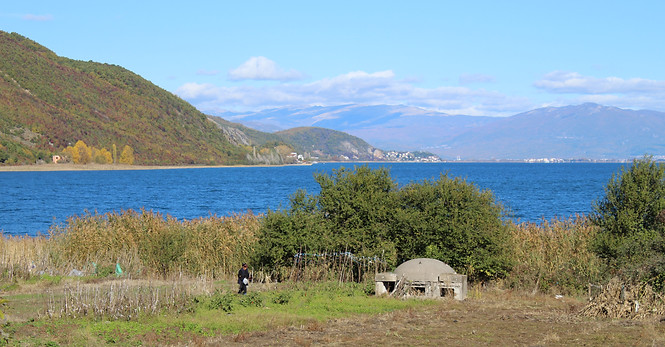Balkan Journal | Albania | 2022-2023
Concrete Paranoia
When traversing through Albania you begin to notice the same familiar looking concrete dome all throughout the country. Weather it be in the middle of a field, in a city, up a mountain or on a beach, the same mushroom looking concrete structure is present. These things are machine gun bunkers and are a reminder of Albania’s isolationist past and have an interesting story behind them.
Albania was different from other communist countries in Europe, sometimes referred to as the ‘north Korea of Europe’. It starts after World War II after communist partisans defeat the fascist occupying forces, soon after the war Enver Hoxha became the dictator of Albania and turned the country into a one-party totalitarian dictatorship. Albania joined the Warsaw pact, The USSR’s version of NATO with other communist states in Europe, in 1955 and remained a member until 1968 when Hoxha, who was a through and through Stalinist, left the Warsaw pact partly due to the Soviet invasion of Czechoslovakia, but more the ideological differences between the two communist parties and the Soviet Union’s ‘revisionism’. Albania then sided with China, who had also split relations with the USSR in the 1960s, with China being the only country it had relations with. It was in 1978 that China ended its relations with Albania on the grounds of Ideological differences again, leading Albania into a period of international isolation until the end of communism in 1991.
Because of Albania’s isolation from the world and being surrounded by powerful entities such as Yugoslavia, Italy and the Warsaw pact, Hoxha grew to be increasingly paranoid of a potential invasion, so in the 1970s he ordered concrete bunkers to be built all over the country. The most abundant of these bunkers were the Qender Zjarri, which translates to ‘firing position’ which could hold one or two people and had a slot for firing out of. The bunker was designed by Josif Zagali, a former partisan, the dome like top was meant to repel bullets and the parts of the bunker were made in a way so they could be produced in mass and be constructed in a modular way. Along with the Qender Zjarri, many other bunkers were used including larger command bunkers and civilian shelter bunkers to name a few. Over 750,000 bunkers were built during Hoxha’s ‘bunkerizimi’ (or bunkerization) of Albania, putting considerable strain on the country’s already dwindling economy and resources.
In addition to the bunkers, fearing the invaders would come with superior equipment and more firepower, Hoxha ordered that all able-bodied people must undergo military training each year in the case of a mobilisation of the civilian population. Because of this, bunkers were also built in residential areas, at the bottom of apartment blocks and in public parks.
Today many bunkers have been removed and destroyed, scrappers destroy them to obtain the steel structure inside the concrete, and as Albania continues to modernise many are uprooted for space to construct new buildings. Thousands however remain across the country, mostly in an unused derelict state and left to crumble. There are a few, but a rising number, that have been repurposed into various uses, particularly along the coast, which is starting to attract more and more tourists every year. Some examples of repurposed bunkers are bars and food huts, animal shelters, storage, and even small hotels with 1 or 2 beds inside. One man I met whilst in Kukes told me he had made a pizza oven out of one in his field, using the machine gun hole to slide pizzas in and out of. Below are some bunkers I came across during my trips to Albania.

A child standing on a bunker, Kukes.

A bunker on a cliff in Lin, Lake Ohrid. Across the water is North Macedonia, Hoxha would have feared an amphibious invasion from Yugoslavia.

A large bunker on the shore of Lake Ohrid.

Bunker used as a religious place of worship, Lin

Bunker in a field.


A line of bunkers in a field, one is broken from age.

A two gunner bunker, Tushemisht.

A woman uses a bunker for storage, Pogradec.

A bunker outside of a village, Lin.

A bunker in a graveyard, Buqez.

A bunker above the road, Buqez.


Bunkers in a residential area, Durres.

Bunkers on the seafront, Durres.

A bunker in the pavement, Durres.

A two gunner bunker, Durres.

A bunker opposite the Prime Minister's office, Tirana.

A bunker in a public park, Tirana.

A bunker next to an office, Tirana.

A bunker hidden in the undergrowth, Porto Romano.


Bunkers on the mountains east of Tirana.